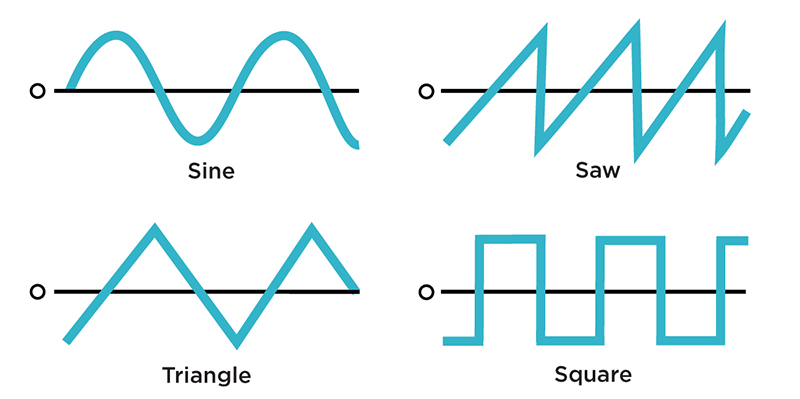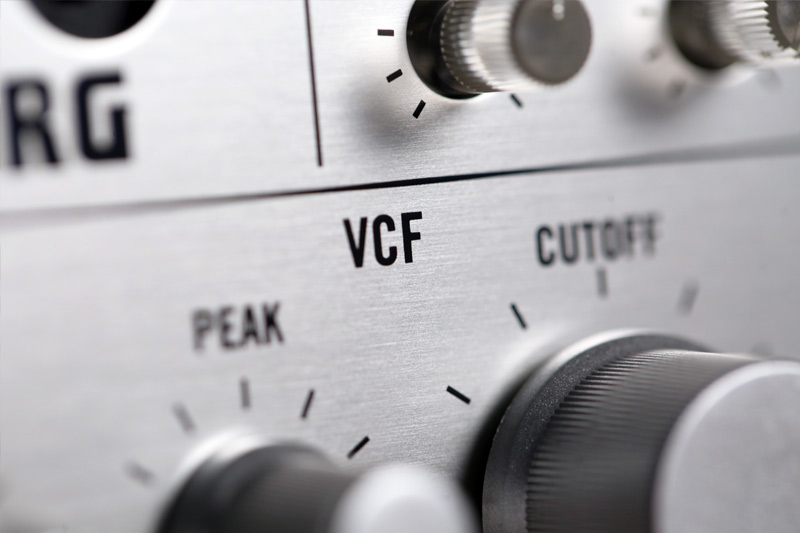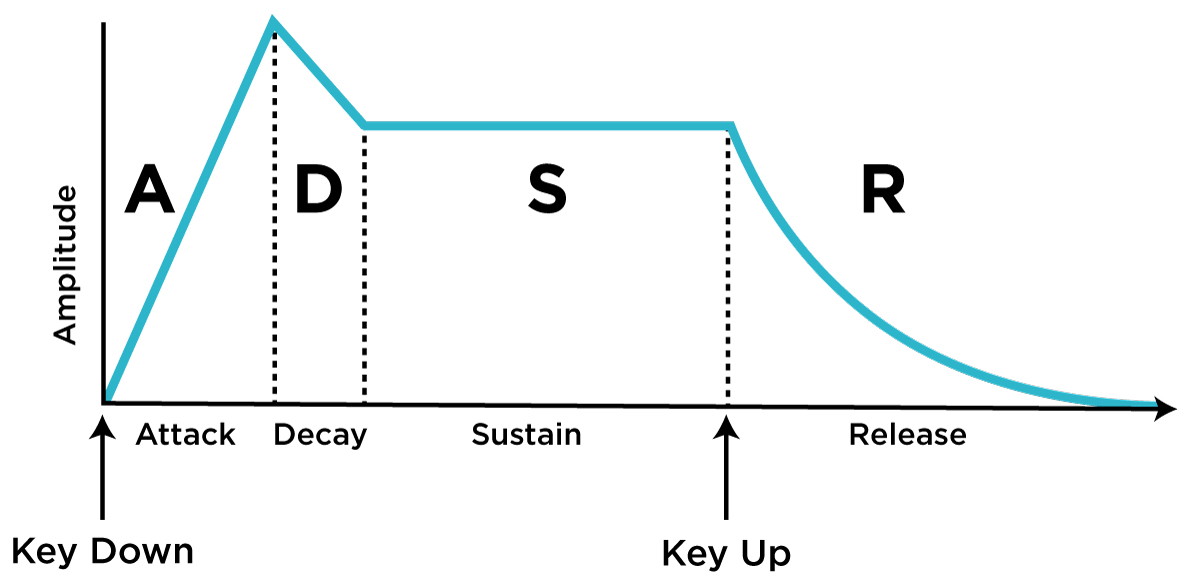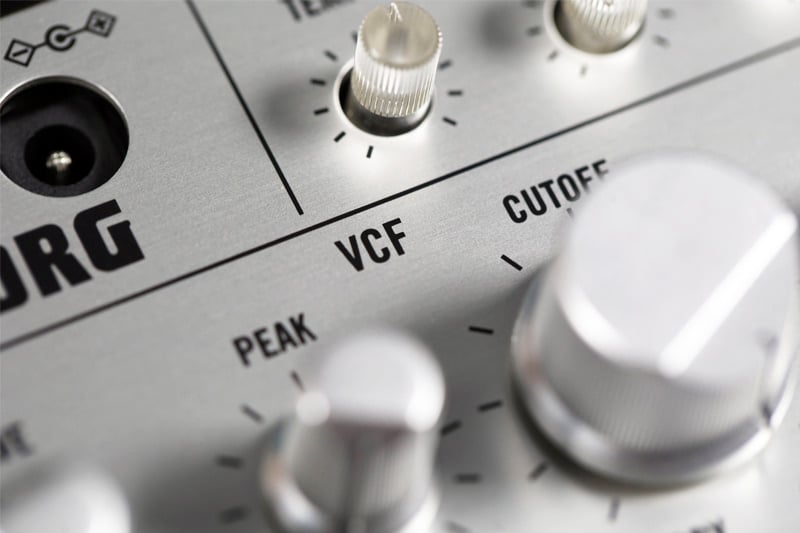A synthesizer is an electronic musical instrument that creates sound through a specific set of processes. An electric keyboard, that expensive piece of Moog equipment, and those strange modules connected by tiny wires—all synthesizers.
Synthesis means to combine ideas to form a theory or system, and that’s exactly what synthesizers do: they put together various processes to form sounds.
From the Beginning: Oscillators
It all starts with electricity. All synthesizers need an electrical current going into them. This can come from a wall socket or batteries.

This electricity goes to a Voltage Controlled Oscillator or VCO. The oscillator generates the raw sound which will be shaped by the synth’s different processes. The oscillator transforms the electric current (the energy) into a repeated signal called a waveform, typically a sine, triangle, saw or square wave. This waveform is our basic sound. Check out the audio file on the left to hear these raw waveforms, each brighter than the last (sine, then triangle, then square, then saw).
A waveform is our raw ingredient for synthesis. In every synthesis recipe, the waveform is altered in several different stages to change how it sounds.
One quick note—waveforms can move at different speeds. The faster they move, the higher frequency they have. The higher the frequency, the higher pitched the resultant sound to our ears.
Shaping the Voice: Filters and VCAs

Next, the sound is transformed. At the Voltage Controlled Filter, or VCF, parts of the sound are sanded off. A filter blocks particular frequencies of the sound from passing through. A high-pass filter, for example, only lets high frequencies or high-pitched sounds to come through. A low-pass filter only allows low frequencies or low-pitched sounds to come through. The cutoff is the point or frequency at which the filter effect kicks in. Check out the audio file on the right. Notice how the sound seem to get darker over time? That's a saw wave running through a lowpass filter, with the filter's cutoff frequency gradually lowering over time.
Filters also often include a control for resonance (though depending on the synth, this parameter might be called q, emphasis, peak, or any number of other things). This control emphasizes the cutoff frequency, and depending on the synth can cause the filter to sound more nasal, wet, thumpy—the filter is often one of the most distinctive parts of a synthesizer, where a lot of its character is defined.
After the filter, the sound usually passes through a Voltage Controlled Amplifier, or VCA. The VCA controls the loudness of the signal, and is the place where overall dynamics are usually handled.
Taking Control: Modulation

Then there are Envelope Generators (EGs), which shape the sound. EGs can be applied to any of the previous steps: they are most often used to shape the oscillator's pitch, the filter's cutoff, or the VCA's loudness. Usually, envelopes provide controls labelled Attack, Decay, Sustain, and Release, which work together to define a sound's overall shape. The audio on the right features sounds with a variety of envelope settings: slow swells, sharp attacks with long decay, and more.
Much like the EG, the Low Frequency Oscillator, or LFO, can also be put into action to impact any of the above steps. It isn’t used to produce sound like the VCO. Instead, it generates an incredibly low frequency waveform, below the range of human hearing. Most commonly, this low waveform is used to shape the sound's rhythm, tone, pitch, or loudness—again, all by interacting with our core modules: the VCO, VCF, and VCA.
In the audio to the left, listen to the effect produced by applying an LFO to the oscillator's pitch. This can generate everything from subtle vibrato to intense changes to the sound's timbre, based on the LFO's frequency and intensity.
Bringing it Together: Synthesis

A synthesizer combines these various processes in one machine. In a self-contained or keyboard synthesizer, these steps are already automatically connected—often in the arrangement illustrated above. In a modular synthesizer, you are required to connect—or patch—the steps to each other.
Hopefully this has helped to demystify the very basics of how most analog synthesizers work—but if you're hungry for more detail on any of these individual sections, check out our Learning Synthesis series, in which we more deeply explore the history and functionality of these individual synthesis components.








